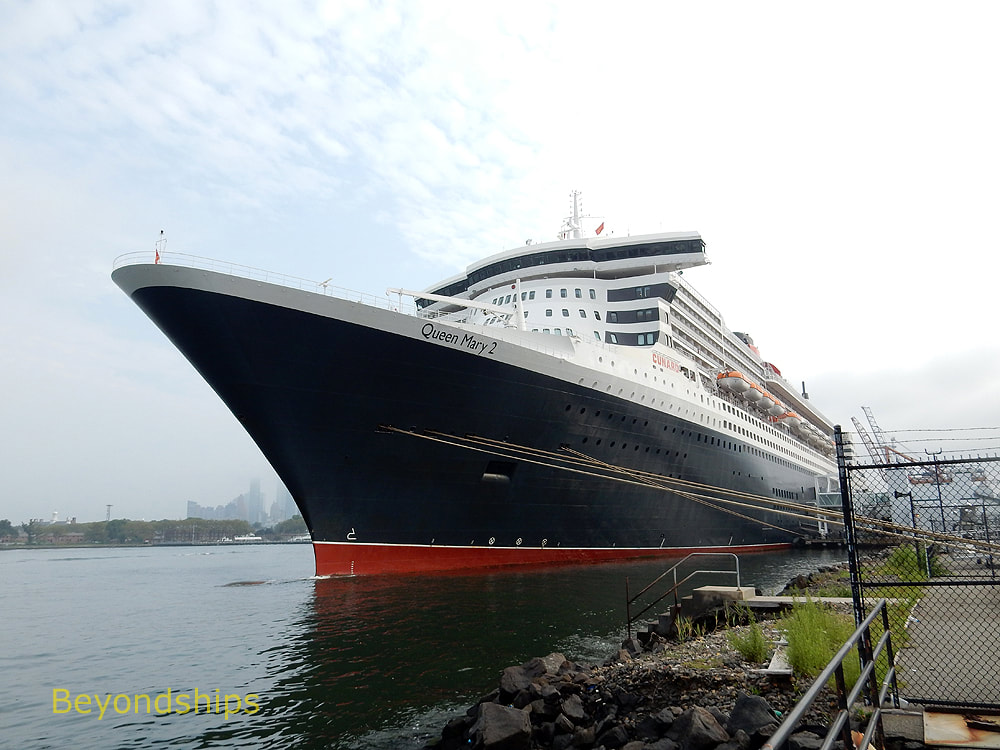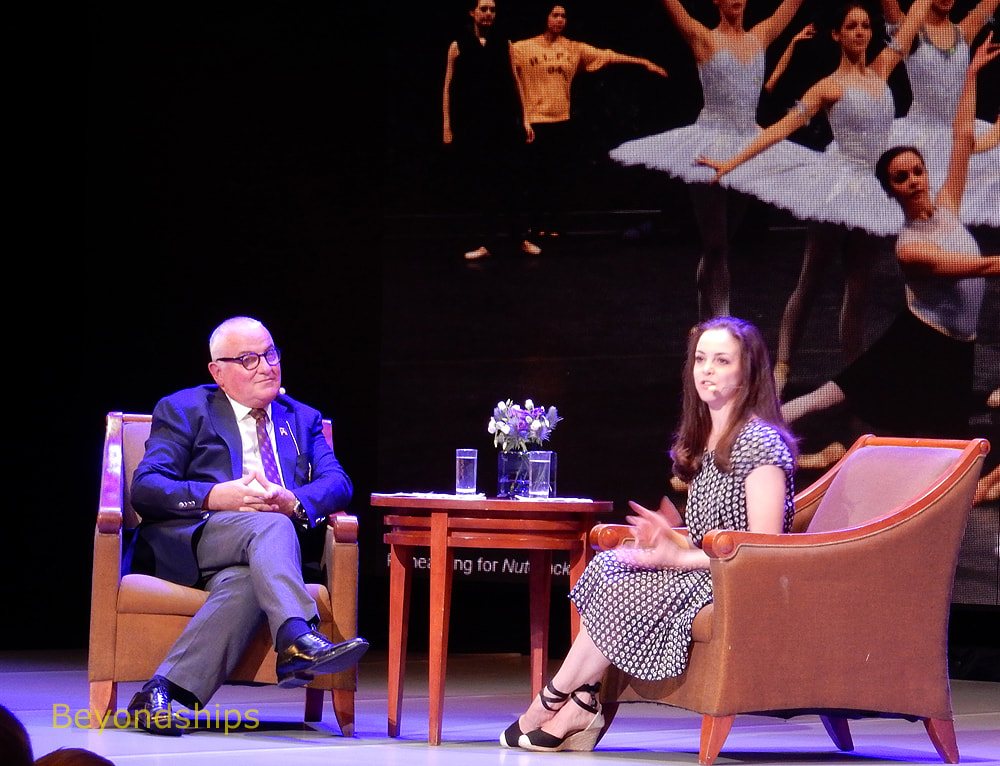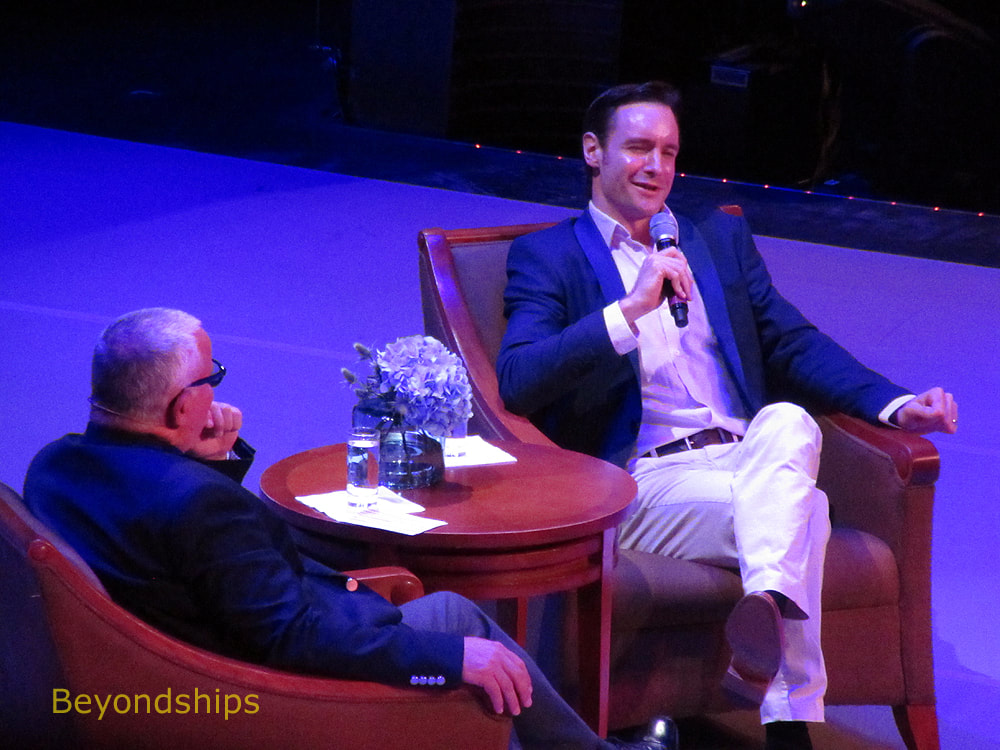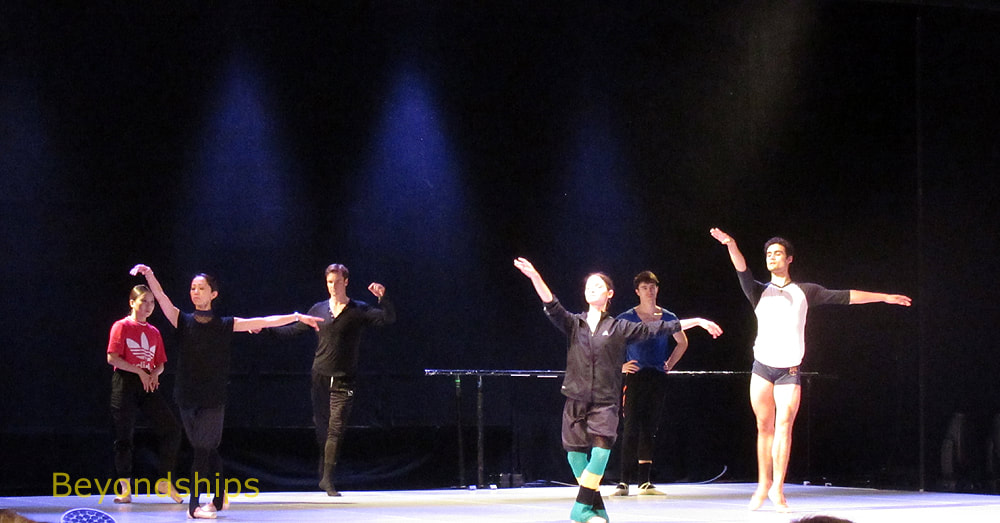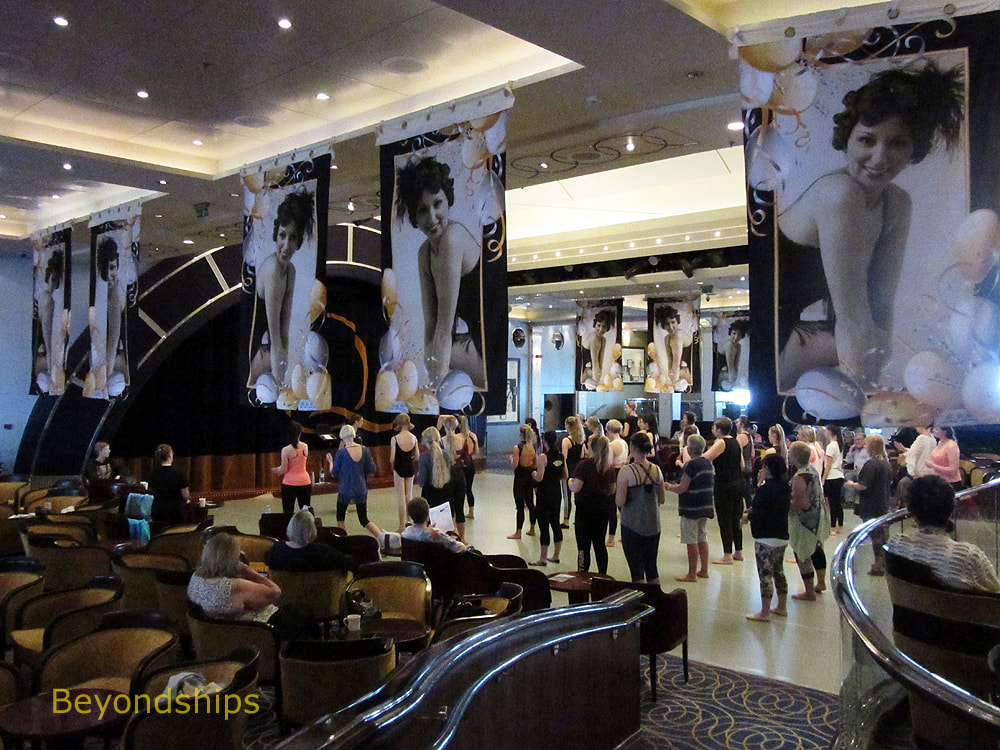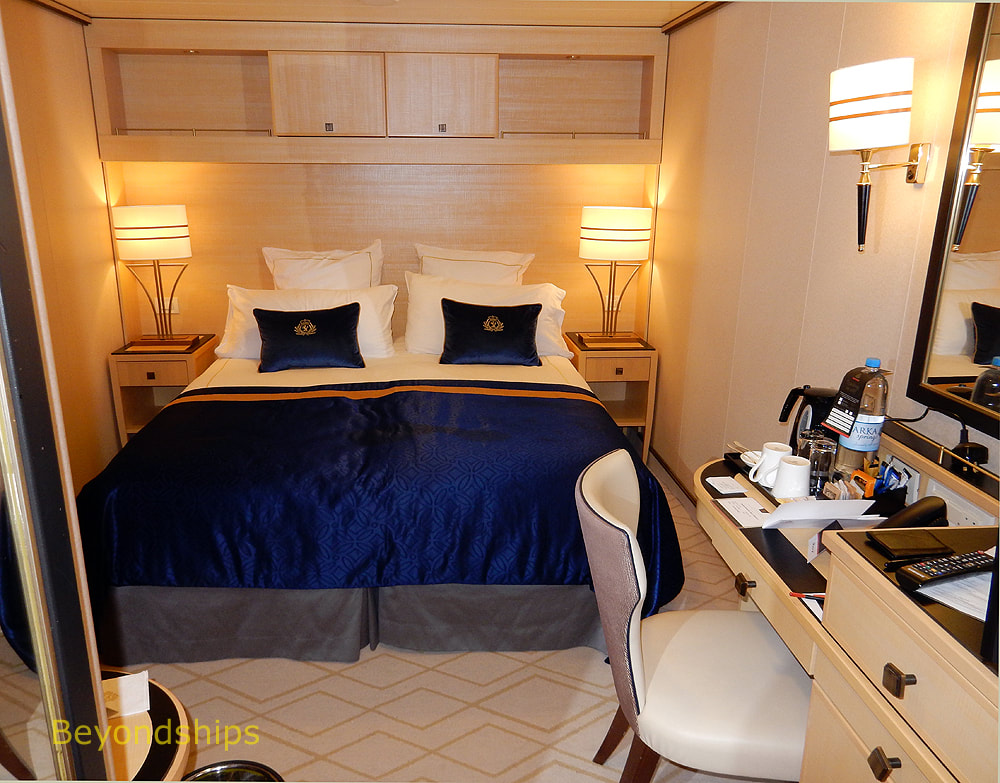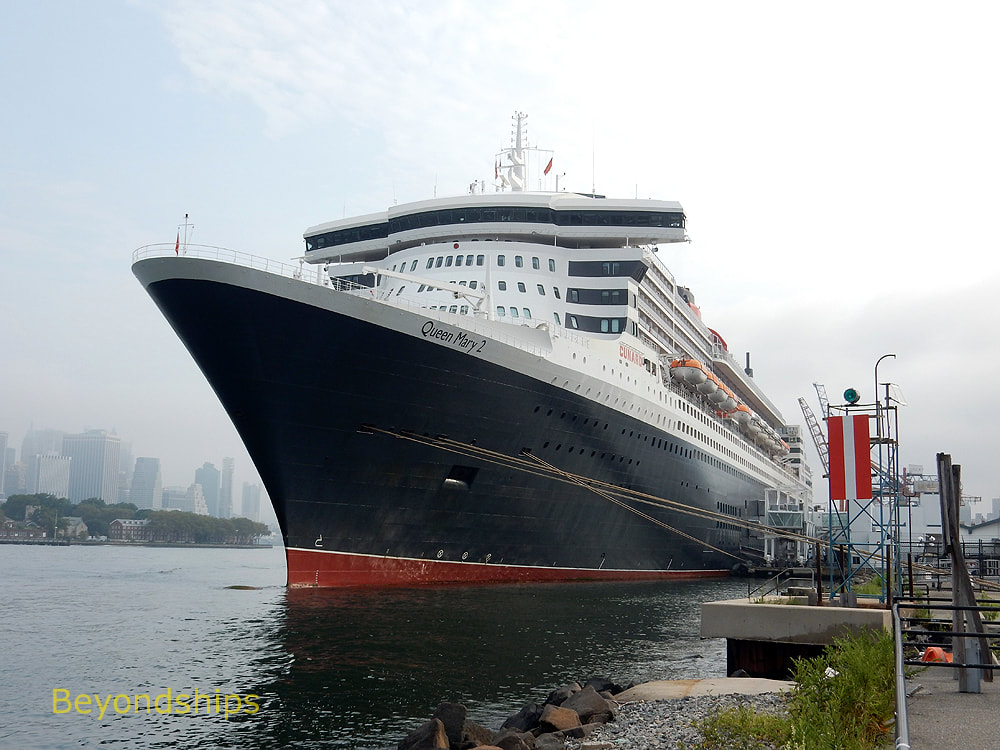|
This was a seven day crossing from Southampton to New York City.
Crossings on Queen Mary 2 are never identical. The people aboard, the weather on the Atlantic, and various events that seem to occur because of the special stature of this ocean liner such as a royal visit or a mid-Atlantic rescue at sea, serve to distinguish her various crossings. Consider also the entertainment. QM2 ship has a standard array of entertainment offerings each voyage. However, on top of these, Cunard often adds a suite of special themed-activities. In the past, there have been voyages with superstar entertainers such as Crosby, Stills and Nash. There have been song-writing programs and fashion programs. Some of these happen once. Some are repeated each year. On this voyage, the theme was called “Dance the Atlantic.” As the name indicates, the special programming on this crossing was a suite of activities and events relating to dance. At the center of Dance The Atlantic was a troupe from the English National Ballet, which included six ballet dancers along with various other members of the company. The English National Ballet is one of four major British ballet companies. It was founded in 1950 by Alica Markova and Anton Dolin who were veterans of the legendary Ballet Russes. As it was the time of the Festival of Britain, the founders were inspired to call the company the "London Festival Ballet." The name was changed in 1989 to the English National Ballet. The company is dedicated to bringing “world class classical ballet to the widest possible audience.” To this end, it tours throughout Great Britain as well as abroad in order to bring ballet to people and places who otherwise may not have access to ballet. It also plays major venues such as the Albert Hall and the London Coliseum. Dancing on a moving ship presents special challenges. Therefore, a special floor was installed on the stage in Queen Mary 2's Royal Court Theatre. The weather also co-operated and throughout the week the sea was remarkably calm. The highlight of the week was the three performances by the troupe in the Royal Court Theatre. Two of the performances were timed so as to accommodate each of the seatings in the Britannia Restaurant i.e., one performance was for the first seating and the other was for the second seating. A third performance was given on the afternoon of the last day of the voyage and was open to all. All of the performances were very well attended. Each of the performances was divided into six parts. They included: White Swan Pas de deux; The Suager Plum Pas de deux from Nutcracker; Leatherwing Bat; Black Swan Pas de deux; Dust (Akram Khan); and Le Corsaire Pas de deux Act II. There was more to Dance the Atlantic than the performances. Each morning the dancers participated in a ballet class led by an instructor. In the afternoons, the dancers rehearsed for the performances. These were open to the guests, not to participate but to watch. Watching the dancers' graceful and athletic movements during these sessions was quite fascinating. Indeed, it inspired me to make a series of sketches and paintings. (See separate article). In addition, there was a series of workshops relating to ballet in which guests could participate. Each workshop had a different theme. Guests could learn ballet technique and some of the fitness techniques dancers use for strength and conditioning. They could also learn choreography from some of the ballets the troupe was performing aboard. These workshops were held in the Queens Room ballroom and those guests who did not want to participate physically were welcome to observe. Again in the Royal Court Theatre, Entertainment Director Paul O'Loughlin interviewed Jennie Harrington, Assistant Artistsic Coordinator and former English National Ballet dancer and separately James Streeter, First Soloist. Guests were able to ask questions at both interviews. |
In addition to the interviews with the people from the English National Ballet, Mr. O'Loughlin interviewed Dr. Merrit Moore. Dr. Moore has degrees in quantum physics from Harvard and from Oxford. She has also pursued a career as a professional balletrina, dancing with a number of major companies. As well as the interview, Dr. Moore gave presentations on her career and on quantum physics.
Ballroom dancing has always been popular on Queen Mary 2 - - the ship has the largest ballroom dance floor at sea - - and ballroom dancing was notoverlooked on this voyage. Guests could attend dance classes given by the National Association of Teachers and Dancing and could qualify for an NATD medal. There were also themed balls held in the Queens Room on the formal nights. Lastly, several dance-related movies were shown in the ship's Illuminations theater and on the stateroom televisions. While some of the guests I spoke with had backgrounds in dance or were fans of the ballet, most of the people on the voyage were there in order to experience QM2 and/or a transatlantic crossing. However, the dance events were well-attended and were well-received. At a minimum, people were curious and even those who may never see a ballet again seemed to enjoy the exposure. Other than dance At the same time, there was plenty for people to do while aboard other than the dance-related events. QM2 always has a good lecture program and on this voyage there were talks by a diverse array of speakers including a maritime historian, a theatrical producer, an art historian, a historian and a member of the Royal Astronomical Society. In addition to the dance-related movies, there were popular movies in Illuminations on other subjects. There were also activities such as watercolor classes and trivia contests. The ship's production cast put on two musical revues and there were visiting entertainers including a comedian. So even if you hated ballet, there was plenty to do. The only thing that seemed to have been displaced by the dance program was the troupe from the Royal Academy of Dramatic Arts. On most QM2 crossings, there is a RADA troupe which perform plays, give poetry readings and conduct acting classes. It would probably not have been physically possible to have both the ballet troupe and the RADA troupe on the same voyage. Nonetheless, I missed them. Looking beyond the entertainment, as on my crossing earlier this year, I enjoyed the dining experience on QM2. (See review). I had almost all of my meals in the Britannia Restaurant. It is open seating for breakfast and lunch. For dinner, I was at the late seating. The variety of the menu offerings, the quality of the food and the service were all very good. For the same reasons, I enjoyed the lunch that I had in the Steakhouse at the Verandah. There was an international mix to the passengers. The largest number of passengers came from the United Kingdom but there was almost as many Americans. Most passengers were mature but there were quite a few young people were aboard including a number of children. Nautically, the ship was very stable throughout the voyage. She also arrived on schedule in New York on time despite having had to divert for an emergency medical evacuation off Newfoundland and having to stop in order to investigate an alarm relating to one of the propulsion pods. Usually, QM2 docks at the Ocean Terminal in Southampton but this time she was displaced by fleetmate Queen Elizabeth. As a result, QM2 docked at the Queen Elizabeth II Terminal. Although an older terminal, the boarding process was quite efficient. I was also pleased with the disembarkation at the Brooklyn Cruise Terminal. |
Above: A poster for Dance the Atlantic at the entrance to the Royal Court Theatre .
Entertainment Director Paul O'Loughlin interviewing Jennie Harrington (above) James Streeter (below) of the English National Ballet.
Above: Each day the dancers participated in dance classes as part of their ongoing training regime.
Below: Guests could participate in ballet workshops in the Queens Room ballroom. Above: A plate of cheeses from the Kings Court.
Below: An inside stateroom. |
Cruise review - - Cunard Line - - Queen Mary 2 - - Dance The Atlantic - Summer 2019
